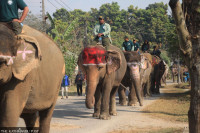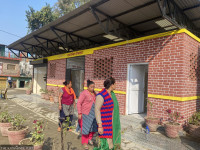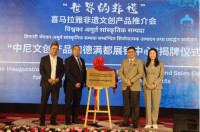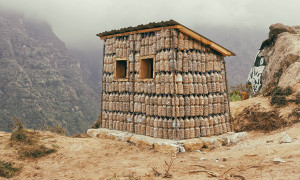Money
Study downgrades expected traffic on planned Fast Track
Potential foreign investors will be even more reluctant now to put money in the project as a new study has downgraded expected traffic
Ramesh Shrestha
A survey conducted by the Kathmandu-Tarai Fast Track Project has concluded that about 3,000 vehicles can be expected to use the expressway daily. The figure is less than half of the estimate published by the Asian Development Bank (ADB).
An ADB study conducted in 2010 had reported that there would be more than 7,000 vehicles. The proposed expressway would link Kathmandu with the southern plains and cut travel time by replacing the present circuitous route. Its estimated cost is Rs 100 billion. After prospective Indian investors abandoned the project by choosing not to submit requests for proposal (RFP), the Fast Track Project had carried out a study last month to re-estimate the potential traffic on the planned highway.
“After counting passing vehicles continuously for five days on the Kathmandu-Birgunj route, we found that there were 3,000 vehicles travelling in either direction,” said Ananta Acharya, chief of the Fast Track Project. He added that the study had clearly showed that the project was not attractive to foreign investors, and that earlier estimates of traffic were “high assumptions”.
A team deputed by the Fast Track Project had counted passing vehicles at Ratamate, a station on the Hetauda-Pathlaiya section. “At least 6,000 vehicles have to be using the expressway daily for investors to make a profit,” Acharya said.
Earlier, the government had planned to build the express highway under the “build, own, operate and transfer” (BOOT) modality involving foreign investors assuming that there would be daily movement of 6,000-10,000 vehicles.
However, Indian companies which had shown interest in investing in the project were not fully confident about the potential traffic. Two of the short listed companies, Infrastructure Leasing & Financial Services and Larsen and Turbo Infrastructure Development Projects, had asked the government to guarantee minimum traffic on the proposed highway. Failure to provide a guarantee and the issuance of a permit to build a competing tunnel highway on the route finally prompted the Indian firms to pull out.
The Fast Track plan is currently under consideration at the National Planning Commission (NPC). Officials of the Ministry of Infrastructure and Transport said that they had proposed to the NPC to set the sights lower by blacktopping only two lanes and leaving two lanes unpaved. The earlier plan had envisaged a four-lane blacktopped motorway.
It has proposed developing the project either through the government’s own resources or receiving foreign aid for the projects from the donors. “As donors provide loans at cheaper rate, we can also develop the project by receiving loans from them,” said Tulasi Prasad Sitaula, secretary at the Physical Infrastructure Ministry. World Bank has also shown interest to fund the project by involving multiple donors.
The expressway is estimated to cost Rs 100 billion. Newly appointed Finance Minister Ram Sharan Mahat had stated at the most recent project evaluation meeting that building two mega road projects at the same time would not be possible.
A 58-km tunnel highway linking Kathmandu with Hetauda is presently being developed by Nepal Purbadhar Bikas Company. The road has a price tag of around Rs 35 billion.
Meanwhile, the Nepal Army which implemented the track opening for the Fast Track from Chalnakhel to Nijgadh is preparing to leave the project site. The army has asked for around Rs 10 million to retrieve its equipment and pay other expenses before leaving.
Acharya said that they would pay the army from the Rs 500 million allocated for the project for the current fiscal year after getting the Finance Ministry’s okay. He added that the sum had been demanded for multiple expenses including clearing the alignment blocked by landslides, fuel, allowances for personnel deployed at the project site and bringing back equipment.




 11.12°C Kathmandu
11.12°C Kathmandu














